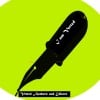- HubPages»
- Books, Literature, and Writing»
- How to Write»
- How to Get Published
Formal Writing Quality Guide for Editors and Writers: First Edition
Editor's Notes
Context or Instructions adherence Check
Identify keywords from instructions, and ensure you incorporate each keyword in your work. Your editor will always use keywords from instructions to check instructions adherence to ascertain content relevance.
Sandwich Method/Rule
Consider using the sandwich method in developing your body paragraphs. The sandwich method entails these steps:
1). Topic sentence,
2). Evidence or example (cited),
3). Explanation or analysis of the evidence (1-3 sentences if it is a long paper),
4). Conclusion sentence or transition to the next paragraph.
You can choose to use more than one related evidence or example, but ensure you do not cite consecutive sentences. One avoids this by explaining/ analyzing each evidence/ example used before going to another within the same paragraph. Note that each body paragraph should present one idea and closely related ideas, in case it is a long paragraph.
Passive Voice
Avoid passive voice; it lowers the quality of your work. Use the standard sentence structure of Subject-Object-verb and present simple tense to ensure this. Only writers who can avoid passive voice in their work can write ENL (English as Native Language) papers successfully. Give it a try, you will be slow at the beginning, but you will regain your speed with the consistency of practice.
Deductive Transition for Concluding Sentences
Introducing a deductive transition to provide the conclusion sentence with a final tone is vital to enhance the flow of your work.
Length of a Paragraph
Paragraphs in academic writing should have at least three sentences because a basic body paragraph comprises of:
1). Topic sentence
2). Concept (cited)
3). Concluding sentence. -Standard body paragraphs are 100-150 words for any given paper.
Manual Proofreading
Build your manual proofreading skills to give editing much work, which subsequently slows down the flow of orders. A good score on Grammarly is not a guarantee that a piece of writing is flawless. Manually proofread before editing on Grammarly or vice versa.
Headings
Where there are various aspects of instructions that should be covered, it is wise to use headings so that the client or reader sees directly without having to take much time searching whether all instructions are covered. This precaution also reduces revision requests. However, you should not overuse headings; for instance, providing headings for each paragraph is a misuse.
Studies/ Research indicate/ assert…
Whenever you mention," Reports/studies indicate/ assert…, you must cite the sentence.
Introduction and Conclusion Paragraphs
A conclusion should be 10% of the paper, the same as the introduction paragraph. Both of them constitute 20% of the paper. Overwriting either of them is wordiness and can be interpreted as a scheme by the writer to meet the word count. One page and two pages tasks do not necessarily require an introduction or conclusion paragraph unless mentioned in the instructions.
Thesis/Focus Statement
Where there is an introduction paragraph, there must be a thesis or focus statement. This is the last sentence of the introduction paragraph that states the hypothesis or acts as a synopsis of the paper.
This…
Use a subject after “This” when it begins a sentence so that it refers to something.
Otherwise, it becomes unclear antecedent.
Topic Sentence
A new paragraph should begin with a separate idea or concept. The topic sentence should not be a transition of the previous sentence in the preceding paragraph. High-quality topic sentences state a fact or hypothesis linked to the thesis statement of the paper.
Comma with Transitions
Use commas after transitions when they are used to begin sentences. Also, use a comma before and after a transitional word or phrase when it comes within the sentence, for instance; …, therefore,…
Passive Voice and Present Simple Tense
Maintain present simple tense and avoid overuse of passive voice in writing; they lower the quality of your work.
Citing
All references must be cited at least once in the body paragraphs. Distribute your citations for every source more or less equally, that is, do not over-cite or under-cite some sources more than others.
‘For', ‘It', ‘And'
Beginning sentences with prepositions and conjunctions lowers the quality of writing. Unless used as a compound or modifier such as "For instance" and "For example," preposition “For" should not start a sentence. You can, however, get away with this but not when it comes to strict clients.
Quantifiers
Do not use quantifiers in academic writing. ‘Very' ‘highly' ‘extremely' … are examples of quantifiers.
Up-To-Date References
Use sources published within the past five years unless instructed otherwise.
Book References
Check if your book references have a place of publication and publisher. Google Scholar and World Catalog may omit these aspects.
Contractions
Contractions are not welcome in any formal writing, including academic writing. For instance, it is wrong to write "it's," "don't" 'e.t.c,' 'e.g' … You are required to write them in full.
Gender Sensitivity
Let your writing be gender inclusive. Words such as ‘mankind' are gender-biased. In this case, consider using ‘humankind.'
,which
A comma comes before ",which" when no prefixes such as "from which" through which' and ‘in which' exist. However, we do not use a coma with ‘that,' which can be used alternatively with ‘,which.'
,as
A coma comes before “,as” where it means “because.”
Colloquial language and slang
Avoid colloquial language and slang. Be straight to the point.
Citing paragraphs
Each body paragraph, that is, excluding the introduction and conclusion paragraphs should present an idea, unless it is a personal reflection paragraph. The idea requires at least one citation within the paragraph. Thus, each body paragraph, which is not entirely an personal reflection paragraph, should be cited at least once.
Use of synonyms
Consider using synonyms to avoid repetition mainly within a sentence or adjacent sentences. Using synonyms offsets redundancy and monotonous tone.
First Person and second-person pronouns
Unless instructed otherwise, academic writing utilizes only third-person pronouns.
Citing conclusion sentences
Just as the conclusion paragraph, a concluding sentence should not be cited. Citing the last sentence of a paragraph is akin to introducing a new concept at the end. You may get away with this in several papers, but you may have a problem with strict clients.
Citing the Topic Sentence
Citing the topic sentence lowers the quality of your work, it is like citing the introduction paragraph.
Dates
References to centuries are spelled out. For instance, you should write “seventeenth century” and not “17th century."
APA and MLA Reference Title
Titles of APA 6th Edition references should be in lower case. You only write proper nouns and the first letter after full stop or colon in title case. On the contrary, MLA 8th edition reference titles should be in title case. Write Journal Names in Title Case for all formatting styles. For example, your journal name should look like this: Journal of International Economics.
Beginning sentences in the same way.
Beginning your adjacent sentences using the same words renders your work redundant and monotonous. Besides, beginning several adjacent sentences with the same word may make the client think that an amateur handled the work.
Headers and Titles
The header should be a brief version of the title. Do not copy/paste the header and use the same wordings as the tile. Also, do not use the subject of the task as either header or title.
Chapters and conclusion of a dissertation
The chapters of a dissertation, together with the conclusion paragraph, should begin on new pages.
Titles of Longer and Shorter Works
Titles of books and other longer works should be in italics when used in the content or in paragraphs. One should put titles of shorter works such as scholarly articles and web sources in quotation marks when mentioned in the body.
Removing personal details from files
You remove personal details from your papers by following the following procedure:
1). Open the document,
2). Go to 'file' on the menu bar,
3). Go to inspect the document,
4). 'document properties and personal information-remove all. -Leave the other aspects listed on the inspect window intact.
Comma with coordinating conjunctions
Use a comma before any coordinating conjunction (and, but, for, nor, so, yet, or) that links two independent clauses. For example, “I went running, and I saw a duck.”
Uploading on Grammarly and Turnitin
Always make a copy of your final paper, one without references/ work cited page. Sources lead to wrong plagiarism scores on Turnitin as well as wrong grammar scores on Grammarly.
Citing Subsequent Sentences
You should not cite adjacent sentences unless you are writing a literature review section. Your subsequent sentence after a citation should be an analysis or explanation of the citation.








